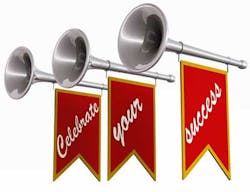Celebrating dental assistants during upcoming Dental Assistants Recognition Week
March 2015 is a very special month for the dental assisting profession. Not only is Dental Assistants Recognition Week being observed March 1-7, but March 17 is the official 90th birthday of the American Dental Assistants Association! It was on that date in 1925 that the ADAA was officially incorporated in the state of Illinois. Looking back at the history of dental assisting, it is truly astonishing to review the transitions that occurred within the profession as well as note the accomplishments of some of its pioneers.
As Kells became more successful in his practice, he realized the need for a second skilled assistant and hired a teenage girl, Malvina Cueria, to assist him fulltime. It should be noted that at the turn of the 20th century, it was still the social norm that women could seek dental treatment only with the consent of their husbands. With the news that Dr. Kells always had his wife and Malvina in attendance during treatment, the dental practice thrived as women felt safe seeking dental treatment without their husbands’ permission or presence. Soon afterwards, many other dental practices began advertising that they, too, had “Ladies in Attendance.” The profession of dental assisting was born!
In 1911, Dr. Henry Fowler, a New York City dentist, hired Juliette A. Southard as a dental assistant. Juliette was a very intelligent and dedicated professional with remarkable leadership skills. Noting that a local society of dental assistants formed in 1917 in Nebraska, Juliette was inspired to begin a local society in New York in 1921. With the success of this local organization, Juliette became inspired to unite all dental assistants within the country. Because women had just recently earned the right to vote and women’s rights movements in the U.S. were still going strong, Juliette and a fellow dental assistant, Jessie Ellsworth (who happened to be president of the Chicago and Cook County Dental Assistants Association) successfully petitioned to attend the American Dental Association convention in Cleveland, Ohio in 1923.
Inspired by the ADA, Juliette orchestrated a national convention of dental assistants in Dallas in 1924 and was elected president during this organizational meeting of what is now the American Dental Assistants Association. Shortly thereafter, the ADAA’s constitution and bylaws were drafted, and on March 17, 1925, Illinois officially incorporated the ADAA. To this day, the Association headquarters remain in the Illinois town of Bloomingdale, just outside of Chicago.
In 2015 the profession of dental assisting still endures, and as dentistry advances with new knowledge and techniques, dental assisting also diversifies and expands. Dental assistants continue to work chairside with dentists, but in today’s world of technology also perform expanded functions, take X–rays, manage the business office, teach, and work in insurance or sales. Regardless of the specialization, dental assistants are vital to the success of all dental practices. To think it all began with the “Ladies in Attendance.” March 17, 1925, is a date being remembered this year by the ADAA.
The ADAA is also proud to celebrate Dental Assistants Recognition Week March 1–7. This weeklong tribute to the commitment and dedication of dental assistants is sponsored by the ADAA, the ADA, the Canadian Dental Assistants Association, and the Canadian Dental Association. “Dental Assisting: Embracing the Changes of the Profession” is the theme for the 38th annual week. It’s a time for dental assistants to receive recognition for their contributions to the dental profession and dental health care of the public.
The ADAA has proudly been the recognized voice of dental assisting for 90 years. It remains committed to promoting quality dental health care to the public, and to enhancing the public image and stature of the dental assisting profession.
ALSO BY KIMBERLY BLAND:The power of peers: Establishing professional networks







